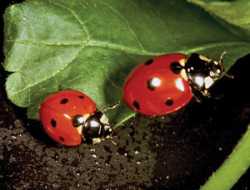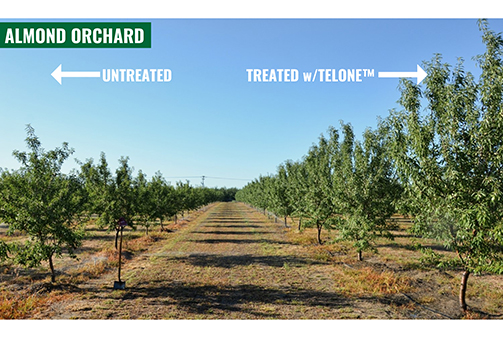Beneficial Of The Month: Ladybugs

Identification And Reproduction
Ladybird adults are oval, range in length from about 1 millimeter to more than 10 millimeters depending upon species, and have wings. Some are orange and spotted, but others may be black and quite tiny.
Elongate-ovoid eggs produce larvae that undergo four instars before pupating, metamorphosing, and giving rise to adults. Typically, ladybugs have several generations each year, and reproduction is slowed or halted by cooler winter weather, when adults may hibernate.
Beneficial Activity
In Florida, adults and larvae of 75 Coccinellid species feed on scale insects, and 13 feed primarily on aphids. Some feed on whiteflies or mites. Those that feed on aphids develop faster, age faster, move faster, are larger, and lay their eggs in clusters. Those that feed on scale insects develop more slowly, live longer, move more slowly, are typically smaller, and lay their eggs singly.
Ladybird larvae and adults may supplement their normal prey in times of scarcity with other types of food. They consume flower nectar, water, and honeydew.
Many species of ladybirds are considered beneficial because they are predators of Homoptera or Acarina, many of which are considered to be pests. These predatory ladybirds contribute to the regulation of populations of their prey, and in some situations contribute a high level of regulation.
Grower Options
In many instances, Coccinellids or other beneficial organisms are already present, and growers can make conditions as favorable as possible for them by avoiding chemicals (insecticides, fungicides, or herbicides) that will harm them. In other cases, augmentative biological control might be warranted. This begins with the recognition that ladybirds in a given pest situation are present but too few to do the job required, and buying more from a commercial producer to release to augment those already present. This requires matching the pest to a purchased ladybird species that will eat that pest. The risk is that if adult ladybirds are released, many of them may fly away.
Greenhouses provide a habitat for plants and pests and biological control agents that differs from outdoor habitats. Classic biocontrol or introduction of a species that will establish a population and eventually control the pest of concern is used in this case. In many such situations, ladybirds can be purchased in adequate numbers to control pests. In some situations, banker plants may be used to provide habitat and an alternate prey source in the greenhouse to sustain ladybug populations in the absence of the pest insect.










